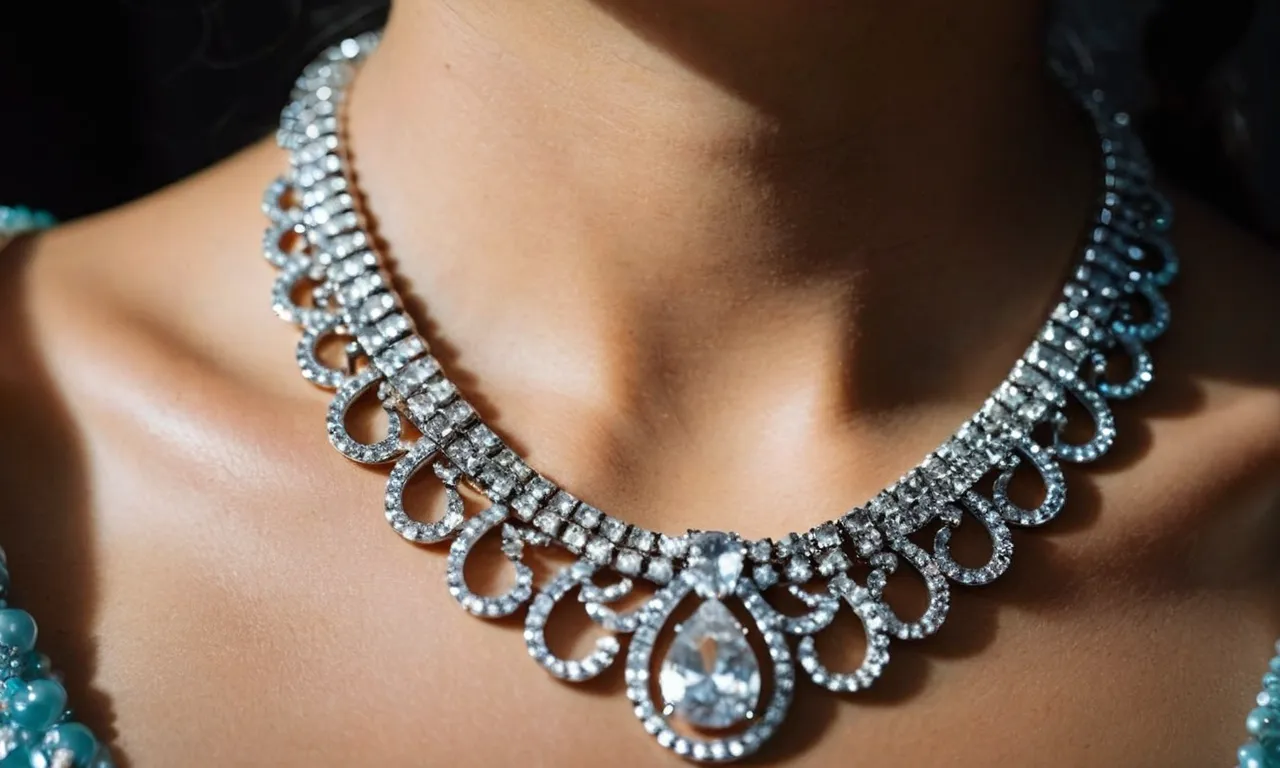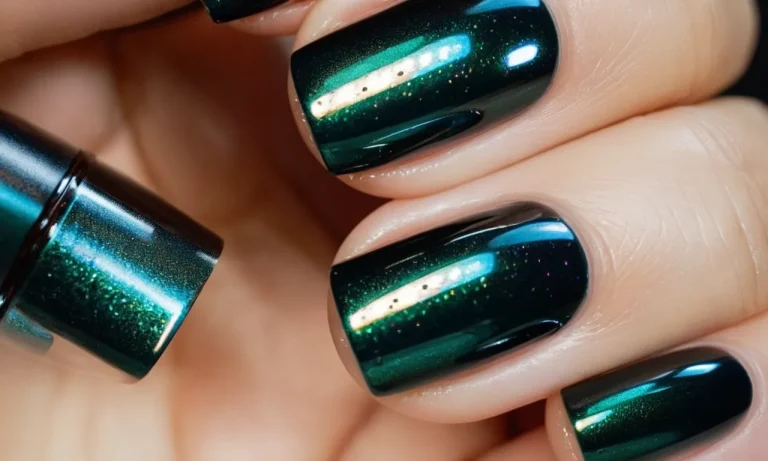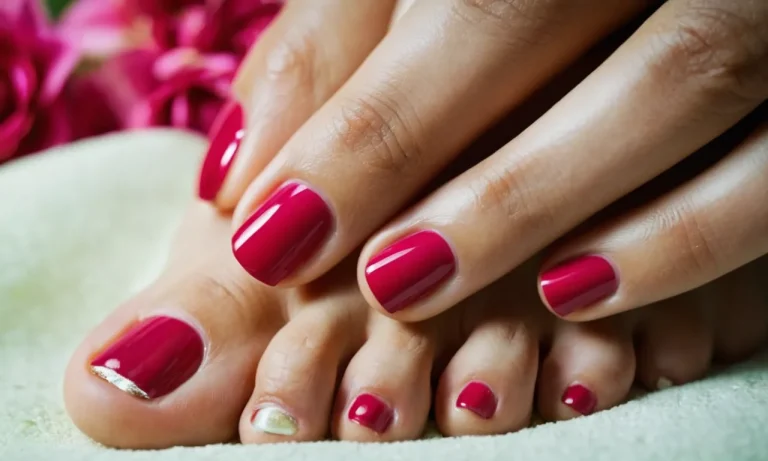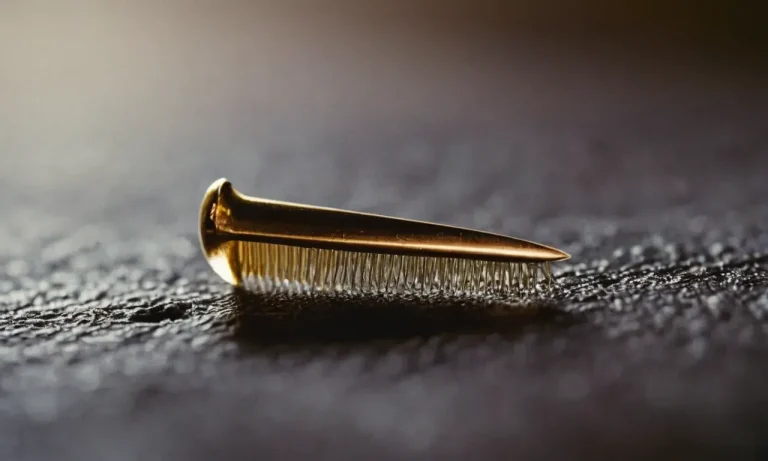Does Clear Nail Polish Prevent Jewelry From Tarnishing?
Tarnished jewelry is a nuisance we’ve all dealt with at some point. If you’re short on time, here’s a quick answer to your question: Clear nail polish can help prevent jewelry from tarnishing, but it’s not a foolproof solution.
In this comprehensive guide, we’ll discuss what causes jewelry to tarnish, explain how clear nail polish can help, look at some other tarnish prevention methods, and provide tips for cleaning tarnished jewelry.
What Causes Jewelry to Tarnish?
Exposure to Air and Moisture
One of the main culprits for tarnished jewelry is exposure to air and moisture. When jewelry containing metals like silver, copper, and brass are exposed to air, a chemical reaction occurs causing the metals to oxidize or corrode.
This oxidation results in the dull, darkened appearance we associate with tarnish. Humidity and damp environments accelerate tarnish by providing extra moisture. Storing jewelry in airtight containers is an effective way to limit air exposure and prevent tarnishing.
Exposure to Sulphur
Sulphur compounds in the air can cause silver jewelry to tarnish rapidly. Sulphur is commonly found in rubber, food, indoor air pollution and cigarette smoke. Sulphur reacts with the silver in jewelry, forming a black silver sulphide layer.
To prevent sulphur-induced tarnish, avoid storing jewelry near rubber bands, keep it away from cigarette smoke and other sulphur sources. Tarnish removers containing sodium thiosulfate can help remove existing sulphur tarnish.
Exposure to Salt
Salt, particularly sodium chloride, can accelerate tarnish on metals like silver, copper and brass. Salt corrodes and oxidizes metal surfaces through an electrochemical reaction. Jewelry worn in ocean environments or stored near household salt is especially vulnerable.
Using distilled water rather than tap water to clean jewelry helps minimize salt exposure. Storing jewelry away from kitchens and bathrooms where salt is more present can also help.
Temperature Changes
Fluctuations in temperature create expansion and contraction that can encourage tarnish over time. The higher the variability in temperature, the more metal expands and contracts. This repetitive movement weakens the protective oxide layer on metal jewelry, allowing air and moisture to penetrate more easily and speeding up tarnish.
Maintaining a climate-controlled storage space helps minimize temperature swings. Bringing jewelry with you when traveling between hot and cold environments will prevent temperature shocks.
Exposure to Lotions and Perfume
Many lotions, perfumes, hairsprays and cosmetics contain ingredients that can cause discoloration on metal jewelry over time. Ingredients like alcohol, fragrances, salts and acids can react with jewelry and degrade protective metal coatings.
Chemical components in deodorants and anti-perspirants are also common jewelry-tarnishing culprits. Limiting jewelry use while applying beauty products helps prevent exposure. Promptly washing off any cosmetics or lotions after use protects long-term luster.
Can Clear Nail Polish Prevent Tarnishing?
Using clear nail polish to prevent jewelry from tarnishing is a popular DIY trick that many people swear by. But does it really work? Let’s take a look at the pros and cons of using clear nail polish as an anti-tarnish shield.
How Nail Polish Forms a Protective Layer
Clear nail polish contains ingredients like nitrocellulose, toluene, and formaldehyde resin that form a plastic-like coating when dried. This clear lacquer layer acts as a barrier between the jewelry’s surface and the environment, preventing moisture, sulfur, and oxygen from reacting with the metal atoms.
The effectiveness of the nail polish depends on how well it seals the surface of the jewelry. Using multiple thin coats allows the polish to adhere tightly to all the grooves and details of the jewelry.
Pros of Using Clear Nail Polish
There are several advantages to using clear nail polish to prevent tarnishing:
- It’s inexpensive and easy to apply. A bottle costs just a few dollars and can be found at any drugstore.
- The thin sealant layer is transparent and non-sticky. It preserves the jewelry’s shiny appearance.
- Nail polish dries quickly compared to other lacquers. The coat can be reapplied easily whenever needed.
- It’s safer than other harsh metal polishes which contain solvents that can damage certain stones and metals.
Cons of Using Clear Nail Polish
However, there are also some downsides to consider when using nail polish:
- It doesn’t last as long as professionally applied lacquer coatings which are thicker and more durable.
- Frequent reapplication is required as the nail polish layer wears off over time.
- Certain types of jewelry or gemstones may be damaged by nail polish ingredients.
- The lacquer sealant can yellow over time, giving the jewelry piece a cloudy, dull appearance.
What Type of Nail Polish to Use
The effectiveness of clear nail polish depends largely on its formulation. For tarnish prevention, it’s best to use a fast-drying nail polish that contains toluene and formaldehyde resin in its ingredient list. Stay away from water-based nail polishes as they don’t form a long-lasting barrier.
Test the nail polish on a small, inconspicuous part of the jewelry first to ensure it doesn’t damage or discolor the surface. Apply thin coats and let dry completely before adding the next layer. 2-3 coats is usually sufficient for a smooth, protective seal.
While clear nail polish can be a quick DIY tarnish preventive measure, it may not be ideal for pieces that require heavy-duty protection. Consider having professionally applied lacquer coatings for expensive jewelry items that you wear frequently.
Other Tarnish Prevention Methods
Storing in Air-Tight Containers
One of the most effective ways to prevent jewelry tarnish is to store pieces in air-tight containers. This prevents moisture and oxygen from reacting with the metal alloys and causing discoloration. Popular airtight options include jewelry boxes, resealable plastic bags, or even small mason jars.
The key is ensuring the container forms an impermeable seal. Storing jewelry this way can keep pieces looking shiny and new for years if done properly.
Using Anti-Tarnish Strips
Anti-tarnish strips are small pieces of cardstock or cloth that have been infused with vapor corrosion inhibitors (VCIs). These help prevent tarnish by emitting gases that block oxygen and moisture from coming into contact with jewelry surfaces.
Simply place strips in jewelry boxes, bags, or other closed storage containers and they will dramatically slow down oxidation and discoloration. Anti-tarnish strips need to be replaced every 1-2 years as the VCIs become fully emitted.
Popular brands like Thompson’s Innovation offer strips, bags and fabrics with VCIs.
Storing with Silica Gel Packets
Silica gel packets work similarly by absorbing excess ambient moisture that could cause tarnishing. While not as effective as airtight storage, placing these moisture-grabbing packets in jewelry boxes or storage containers can provide some added prevention.
The silica beads will become saturated over time and lose effectiveness, so regular replacement every 4-6 months is important. Used gel packets can also be revived by drying them out in the oven. Small packets are inexpensive and available at most craft and department stores.
Using Tarnish-Resistant Alloys
Jewelry designers can also combat tarnish by using metals and alloys that are less prone to oxidation. For example, tarnish-resistant white gold contains higher palladium or platinum levels than nickel. Stainless steel contains chromium oxide that forms a protective barrier.
Titanium, platinum and sterling silver alloys also have inherent properties that resist discoloration naturally. Choosing jewelry made with these metals will provide some built-in protection against the elements.
Tips for Cleaning Tarnished Jewelry
Baking Soda and Aluminum Foil
One of the easiest and most effective ways to clean tarnished silver or gold jewelry at home is with baking soda and aluminum foil. Simply line a small baking dish with aluminum foil, shiny side up. Sprinkle a generous amount of baking soda over the foil, then place your tarnished jewelry on top.
Add just enough water to moisten the baking soda into a thick paste. Allow the jewelry to soak for 5-10 minutes, then rinse clean. The chemical reaction between the baking soda and aluminum helps lift tarnish off metals. This method works great for lightly tarnished items.
Jewelry Cleaner Solution
For moderate to heavily tarnished jewelry, a store-bought jewelry cleaner is usually the best bet. Look for a cleaner specifically formulated for your jewelry type – silver, gold, diamonds, etc. Follow instructions on the package.
Many solutions involve soaking jewelry for 5-10 minutes in the liquid cleaner, which contains mild detergents and chemicals designed to dissolve tarnish. Rinse thoroughly afterwards. Harsh chemicals can damage some gemstones and enamel, so check if your pieces are safe for soaking first.
Dish Soap and Water
For a quick tarnish removal option, try mixing a few drops of mild dish soap like Dawn into warm water. Soak jewelry for 5-10 minutes, gently scrub with a soft toothbrush if needed, then rinse clean. The soap helps break up tarnish, while the toothbrush provides light abrasion.
Be careful using this method on softer metals like gold that can scratch easily. Avoid scrubbing delicate stones. Mild dish soap removes tarnish safely without harsh chemicals.
Toothpaste
Believe it or not, toothpaste contains mild abrasives that can help buff away tarnish on jewelry when used with a soft cloth or toothbrush. The abrasives in whitening toothpastes work best for polishing. Simply put a small dab of toothpaste on a soft cloth.
Gently rub the toothpaste onto the tarnished metal in circular motions. Rinse thoroughly. You can also use an old toothbrush for scrubbing crevices and under stones. This works well for light tarnish, but may take some elbow grease for heavier buildup.
Professional Jewelry Cleaning
For valuable jewelry pieces or heirlooms, professional cleaning may be the safest option. Many jewelers offer inexpensive cleaning services using powerful ultrasonic machines and commercial-strength solutions.
Ultrasonic cleaners use high frequency sound waves to gently lift dirt and tarnish off jewelry. Jewelers also have access to steam cleaners, polishing wheels and expert skills for restoring shine. Professional cleaning is especially recommended for softer gems like pearls, opals and emeralds that require special care.
For deep-set grime, professional cleaning ensures jewelry gets thoroughly clean without damage.
Conclusion
While clear nail polish isn’t a silver bullet against tarnishing, it can provide an extra layer of protection for susceptible metals like silver, copper and brass when combined with proper storage and care.
Test on a small area first to make sure the nail polish doesn’t damage or discolor the metal finish. With some simple preventive steps and occasional cleaning, you can keep your favorite jewelry looking its best for years to come.







